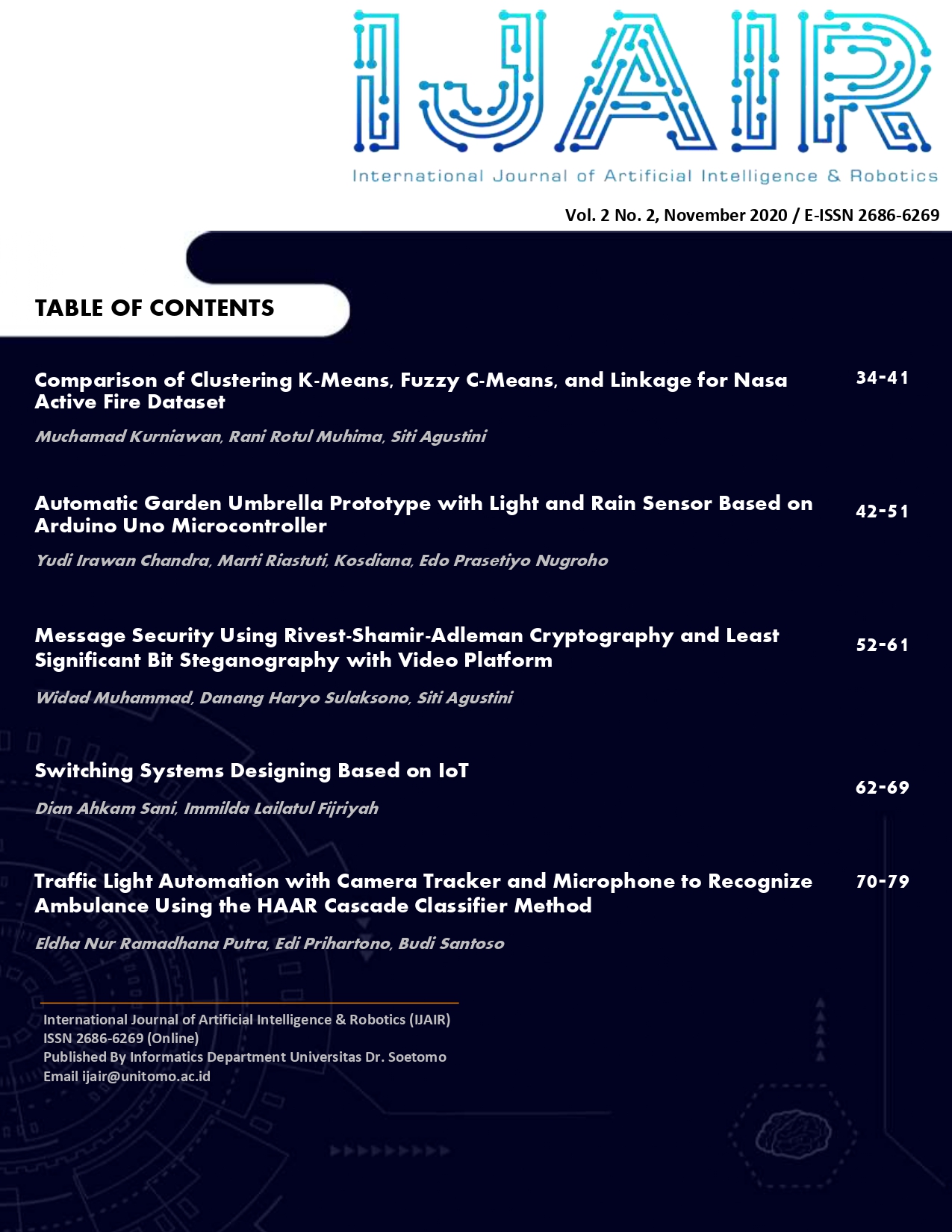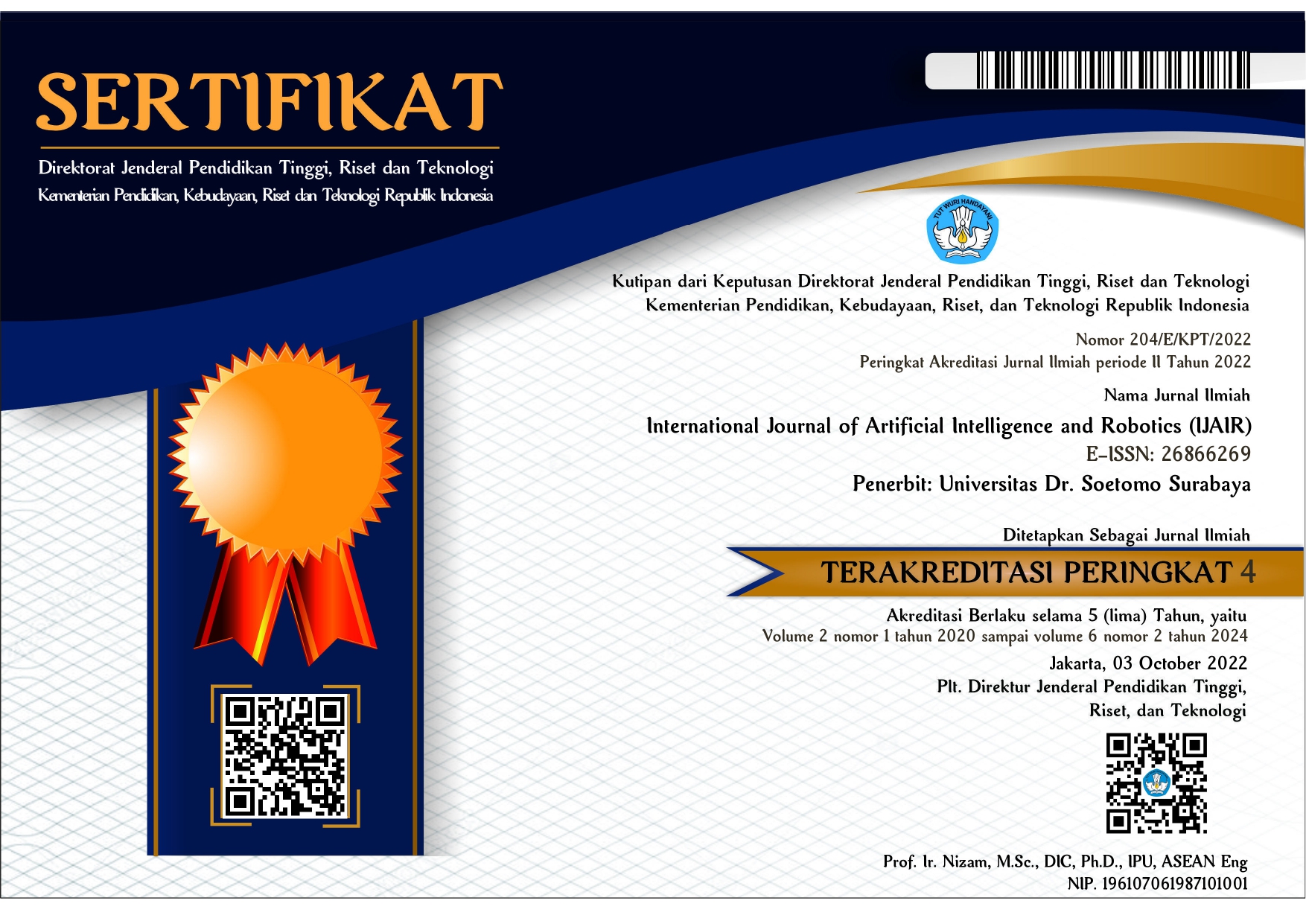Switching Systems Designing Based on IoT
 Abstract views: 315
,
Abstract views: 315
,
 PDF downloads: 219
PDF downloads: 219
 Turnitin downloads: 0
Turnitin downloads: 0
Abstract
The development of technology has progressed very rapidly in a short period, as has technology that has recently been developed in various aspects of life, namely the Internet of Things. In the past, controlling household electrical appliances was usually done directly by pressing a button on the house's wall and was very ineffective when the house owner was out of town while the house was empty. With the Internet of Things technology, a system can be applied in everyday life, namely controlling household electrical appliances to turn off and remotely using internet communication via an android smartphone. In this system design, a control design using a series of microcontrollers and relays connected to a smartphone via the internet is used because the microcontroller already has a  Wireless Fidelity (WIFI) module. The results of controlled tests on household electrical appliances can run well. All components of the design of the device are well integrated with smartphones and the internet. Control can be done anywhere and anytime. System response during the day between 1-4 seconds and at night between 1-2 seconds.
Downloads
References
[2]Somayya, Makadam., et al., (2015). Internet Of Things (IoT) : A literature review. Journal Of Computer and Communication,3,164-173.
[3]Prabowo, Yoga., (2018). Perancangan Smart Home System Berbasis Internet Of Things.
[4]Herfika, Y., & Susmini, I. L. (2019). Sistem Pengontrolan Peralatan Rumah Tangga Berbasis Raspberry Pi, 1-9.
[5]Bakare, B.I, Odeyemi, F. M., (2015). Switching Of Security Lighting System Using GSM, American Journal of Engineering Research(AJER), 126-137.
Copyright (c) 2020 Dian Ahkam Sani

This work is licensed under a Creative Commons Attribution-ShareAlike 4.0 International License.
Authors who publish with International Journal of Artificial Intelligence & Robotics (IJAIR) agree to the following terms:
-
Authors retain copyright and grant the journal right of first publication with the work simultaneously licensed under a Creative Commons Attribution License (CC BY-SA 4.0) that allows others to share the work with an acknowledgment of the work's authorship and initial publication in this journal.
-
Authors are able to enter into separate, additional contractual arrangements for the non-exclusive distribution of the journal's published version of the work (e.g., post it to an institutional repository or publish it in a book), with an acknowledgment of its initial publication in this journal.
-
Authors are permitted and encouraged to post their work online (e.g., in institutional repositories or on their website) prior to and during the submission process, as it can lead to productive exchanges, as well as earlier and greater citation of published work.















